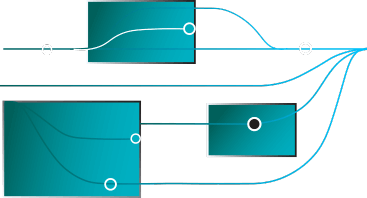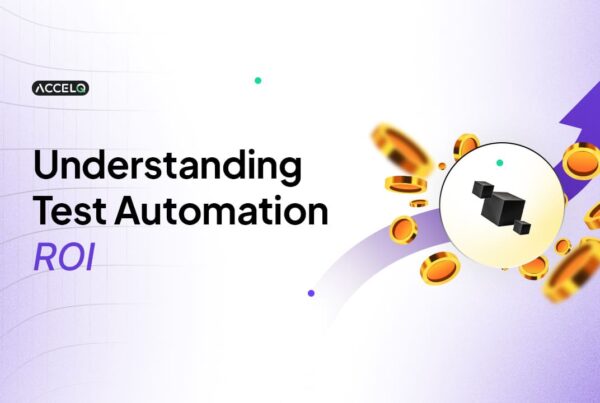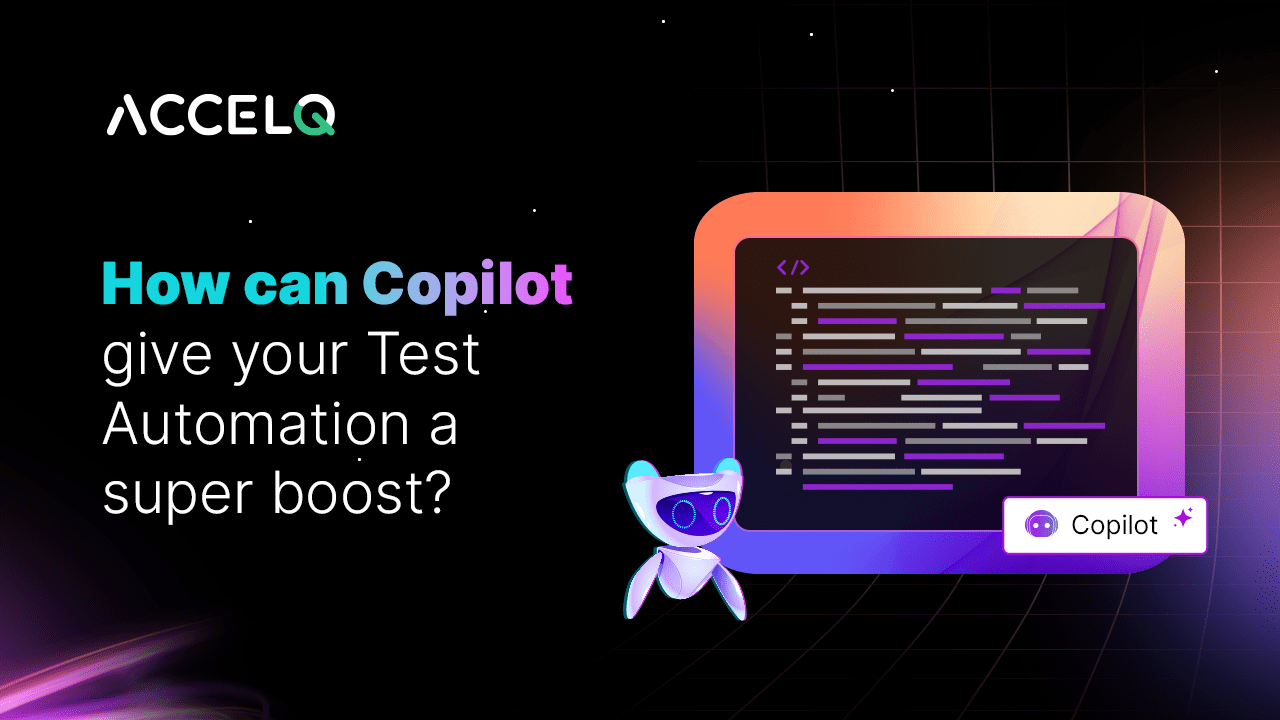How can Copilot give your Test Automation a super boost

When OpenAI launched ChatGPT a year ago, it made AI more accessible to the broader population and spurred the adoption of AI across various industries. Today, every enterprise is compelled to work with a generative AI strategy and constantly re-evaluate the impact of AI in their industry. The revolutionary generative AI has heralded a new age of applicability in tech, the most recent being Copilot. Copilots, or generative AI-powered assistants, have been steadily rising with generative AI adoption and advancement and are powerful enough to increase productivity and streamline how we work rapidly.
"AI has undergone a significant transformation in the digital landscape, evolving from a tool for task automation to a collaborative partner. This evolution is driven by advancements in machine learning, natural language processing, and predictive analytics, enabling AI Copilots to understand and predict human needs, thereby providing adaptive and contextually relevant support."- Forbes.
An overview of Copilot:
Copilots are advanced collaborative tools based on large language models and generative AI technology. They can integrate smoothly into the existing software infrastructure and manage various activities, from summarizing everyday information to analyzing large datasets. Effective deployment of Copilot helps teams focus on more significant, demanding strategic initiatives. The role of a Copilot is only to augment, not replace, the workforce by helping complete monotonous, labour-intensive, or routine coding activities, thus enriching the overall work experience.
Copilots leverage AI and align to accelerate code generation based on inputs from user intent and logic. This helps accelerate problem-solving, writing tests, and exploring new APIs (Application Programming Interfaces) without the tedious process of searching for alternate solutions on the web. It is a step ahead and can boost coding efficiencies for developers and testers. It is an intuitive, advanced AI-driven assistant that advances coding abilities by leveraging Machine learning, natural language processing, and advanced analytics.
Let's sum this up for you:
- Copilot and other programs like it, sometimes called code assistants, assimilate required information and put it right next to the written code.
- It tracks the code and comments (or possibly even descriptions written in natural language) in the specific file or files within the same project, assimilates it, and sends this text to the large language model behind Copilot as a prompt.
- The Copilot then predicts the expected programmers’ efforts and accordingly suggests the code.
Transitioning into test automation with Copilot.
Large language models have gained popularity in various domains, including test automation, and help focus on the quality and reliability of software products. With increasing complexity among applications deployed, the demand for efficient and effective test case creation methods has consequently gained prominence. Generative AI tools, such as OpenAI's ChatGPT and GitHub's Copilot, have emerged as powerful and promising resources to accelerate test automation efforts.
While enterprise applications can be customized to an organization's unique needs and processes, setting up Copilot may get tricky with constant release updates, new patches, and configuration changes.
These custom tweaks still need to function post updates and getting them tested every time can be complicated. Test automation can eliminate the hassles of validation chaos and save time with minimum effort.
Do more with Test Automation
Discover more ways to add ‘low-code no-code‘ test automation in your workflows

An AI Copilot has its:
Primary Use Case: Can execute actions.
Core technology strength: Real-time communication with APIs + SQL databases + Vectorized database.
AI offers remarkable opportunities to streamline and enhance software testing, from script creation to execution. With an increasing rate of technical complexity change and reduced delivery cycle time, AI-powered solutions are stepping up to meet demands for continuous testing.
QA engineers today have the challenge of updating their test automation suite before each release cycle. This challenge arises from smaller cycles coupled with faster changes- imagine fuelling a car when it is on track. With AI algorithms and automated test script generation, it is possible to keep pace with development and predict potential problem areas before they arise.
With AI, QA practices help manage fast-paced development cycles and improve overall quality assurance strategies covering UI (User Interface) Testing and API (Application Programming Interfaces) Testing. With its inherent ability for pattern recognition and predictive analysis powered by machine learning, AI can significantly enhance test coverage, allowing QA teams to focus more on complex tasks and less on mundane, repetitive activities.
Can Copilot replace developers and automation testers?
Just visualize a qualified Copilot in an airplane, seated and working in complete tandem with the pilot in charge of the flight. AI Copilots work alongside the user; the developer or the tester takes over basic tasks, handles basic questions, and makes suggestions.
Copilots herald a whole new era of testing in day-to-day development, thanks to the advent of AI and ML. Testers and developers can focus on real problems and avoid haggling with the text editor or googling for code completion. Despite its advantages, Copilot could churn out ineffective or invalid code with subtle bugs since it draws from the context it receives as input. AI must still catch all complex nuances a tester or developer can grasp and parse effectively. However, this can rapidly change once such services advance their capabilities with the help of data gathered from skilled users.
Copilot could have its limitations, but it represents a significant step ahead in harnessing the power of AI in software testing. In an evolving technological environment, Copilot and similar AI tools can become invaluable assets in the testing arsenal, provided the right balance between Automation and human intervention occurs. Copilot is another tool that highlights what can be achieved, but realizing the knowledge and potential lies in the skill of resources.
A recent Microsoft report aptly points out that AI cannot fix challenges at work magically; employees still must be adept at critical thinking, creativity, and analytical judgment.
So, how can this Copilot super-power be optimized in development and testing areas?
An all-around automated testing approach is step one.
Innovative AI solutions can automate testing at scale and help with high-quality software outcomes. AI-powered platforms like Copilot analyze comments and prompts, create test cases, and go through the testing process in a self-healing environment. This does away with flaky testing, enhances test coverage, and improves productivity.
If you are eager to experience the power of Copilot, contact us and take the first step towards revolutionizing your test automation.
Geosley Andrades
Director, Product Evangelist at ACCELQ
Geosley is a Test Automation Evangelist and Community builder at ACCELQ. Being passionate about continuous learning, Geosley helps ACCELQ with innovative solutions to transform test automation to be simpler, more reliable, and sustainable for the real world.
Discover More
 From Code to cognition- Tracing the journey of AI and its impact on test automation.
From Code to cognition- Tracing the journey of AI and its impact on test automation.
From Code to cognition- Tracing the journey of AI and its impact on test automation.
 Calculating and Optimizing Test Automation ROI
Calculating and Optimizing Test Automation ROI



